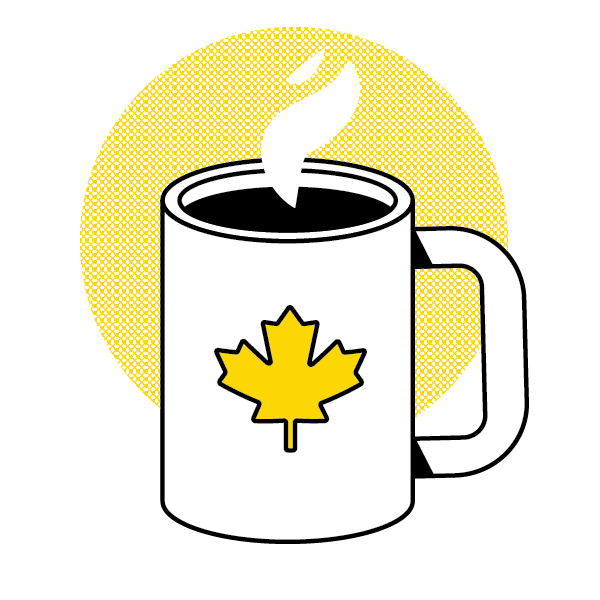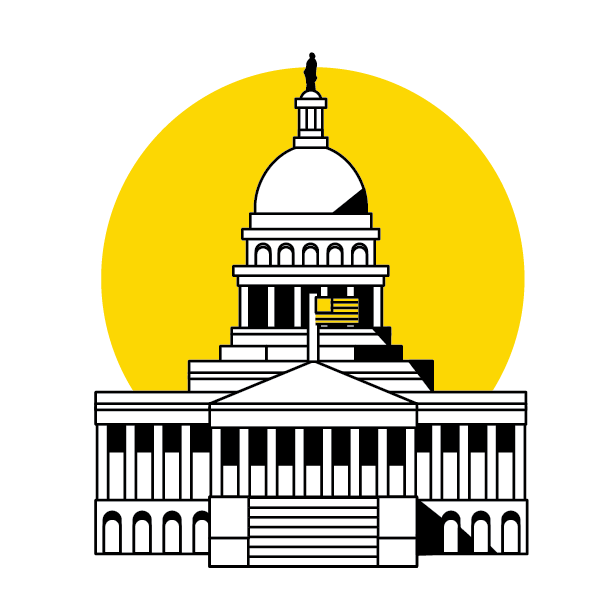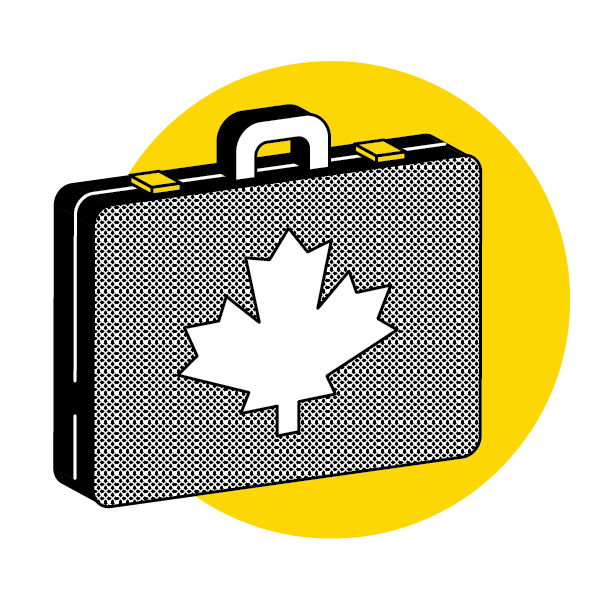Conventional wisdom in Washington says there are two camps within the White House when it comes to trade: The nationalists, and the globalists.The arch rivalry between the two factions has earned comparisons to Game of Thrones. The strategic machinations. The backstabbing. The shifting allegiances.Caught in the middle of the sword-sharpening and jockeying for power is America’s trading partners, trying desperately to get a foothold in the uncertain power dynamics.Strategies are divergent. Israeli Prime Minister Benjamin Netanyahu has mimicked President Donald Trump’s rhetoric and style, having released a video this week decrying the “fake news” of Hamas. Perhaps unsurprisingly, Trump’s first foreign visit since becoming president will be to Israel.When it comes to economic infighting in the White House, the globalists, luckily for America’s trading partners, are key figures.One figure that Canada has been keeping its eye on for months was finally put in the game yesterday.Trump’s nominee for the administration’s trade representative, Robert Lighthizer has been confirmed by the Senate, after months of delay, bolstering the free trade bloc in the White House.With Lighthizer in place, a notice to negotiate NAFTA can now be sent to the other parties to the agreement, although Trump press secretary Sean Spicer suggested on Monday that the notice could be weeks away. Even so, that has Ottawa and Mexico City heaving sighs of relief.Read more: Trudeau is lobbying Washington to save Canada’s biggest trade deal from TrumpLate in April, word emerged that Trump, who had long promised to renegotiate NAFTA, was days away from signing an executive order announcing notice to withdrawal from the deal entirely. Ultimately, he was talked into not signing the document.Publicly, he credited President Enrique Peña Nieto and Prime Minister Justin Trudeau for changing his mind. Others pointed to Agriculture Secretary Sonny Perdue. Last week, the Canadian Press reported that it was actually senior advisor and son-in-law Jared Kushner who called Ottawa and convinced Trudeau’s office to get on the phone with Trump in order to change the president’s mind.A source within the prime minister’s office acknowledged that Kushner had called Katie Telford, Trudeau’s chief of staff, but downplayed the significance of Kushner’s call, revealing that Kushner has kept in fairly frequent contact with Telford and others in Trudeau’s office in recent months. When I asked Canadian Ambassador to the United States David MacNaughton who deserves credit for torpedoing the executive order, he lauds the intervenors around Trump who were “making the case for us,” adding, somewhat cryptically: “Not just for us, but for them.”So Canada has some useful friends.One senior Canadian source gave VICE News the rundown of Ottawa’s view of Trump’s inner circle.Secretary of State Rex Tillerson, said to be one of Trump’s most-favored cabinet members, managed to make an impression on the Canadian government.Beyond just having the president’s ear, Tillerson apparently strikes a more moderate tone on trade issues, owing in no small part to his former gig as CEO of ExxonMobil. He came to Ottawa armed with an existing knowledge of the Canadian oil industry, the complex patchwork of Indigenous land ownership across the country, and an understanding of the opportunities and drawbacks of natural resources in the Canadian north.Then there’s “the generals” — retired general John Kelly, who heads up the Department of Homeland Security; and Defense Secretary James Mattis, who previously commanded the U.S. Central Command.The Canadian official said it was Kelly who was on the phone with Ottawa as soon as Trump’s executive order banning travel from an array of Middle Eastern countries was released. Kelly, who appeared caught off guard by some of the details in the order — including the fact that the order did not specifically exempt green card holders — did not call to try to explain away the order, but instead to vow that he’d smooth things over. The message he conveyed to the Canadians was: I am going to fix this.Commerce Secretary Wilbur Ross is a bit more of an enigma. He, a long-time Democrat who had supported some Republican candidates, is seen as being less beholden to one camp or another.He has also become one of Trump’s more high-profile media surrogates. Ottawa felt that first-hand, when Ross loudly slapped down Canada’s threat of trade retaliations over an ongoing spat on softwood lumber.But he has, apparently, been fast to return Ottawa’s phone calls. And, as one of Trump’s earliest supporters, he’s a key influencer in the White House.I asked Andrew Leslie, the rookie Member of Parliament and former general who was tapped by Trudeau to serve as his America point person, how Canada plans on responding to the tide of protectionism that has become endemic across the political spectrum.“There’s a variety of things that gets put out there, but our operating philosophy is: Keep calm and carry on,” Leslie says.He contended that hitting the hustings and convincing the heartland that NAFTA is a net positive — and that it would be devilishly hard to “untangle” — is a prime way to turn that tide.But, first, he says, Ottawa needs to figure out the lay of the land.“It’s always worthwhile to study your friends and to understand what they’re thinking,” Leslie says.While Ottawa has done well to make inroads with the moderates around Trump, it still faces some headaches amongst the nationalists.At the helm of that part of the White House, Steve Bannon is Trump’s chief strategist and former campaign architect who has been credited with some of the president’s more severe and ethno-nationalist policies and positions. Peter Navarro, head of the White House National Trade Council, started off as one of Trump’s first — for a time, only — economic advisors who was plucked out of relative obscurity after one of his books was discovered by team Trump on Amazon, according to a Vanity Fair profile.
When I asked Canadian Ambassador to the United States David MacNaughton who deserves credit for torpedoing the executive order, he lauds the intervenors around Trump who were “making the case for us,” adding, somewhat cryptically: “Not just for us, but for them.”So Canada has some useful friends.One senior Canadian source gave VICE News the rundown of Ottawa’s view of Trump’s inner circle.Secretary of State Rex Tillerson, said to be one of Trump’s most-favored cabinet members, managed to make an impression on the Canadian government.Beyond just having the president’s ear, Tillerson apparently strikes a more moderate tone on trade issues, owing in no small part to his former gig as CEO of ExxonMobil. He came to Ottawa armed with an existing knowledge of the Canadian oil industry, the complex patchwork of Indigenous land ownership across the country, and an understanding of the opportunities and drawbacks of natural resources in the Canadian north.Then there’s “the generals” — retired general John Kelly, who heads up the Department of Homeland Security; and Defense Secretary James Mattis, who previously commanded the U.S. Central Command.The Canadian official said it was Kelly who was on the phone with Ottawa as soon as Trump’s executive order banning travel from an array of Middle Eastern countries was released. Kelly, who appeared caught off guard by some of the details in the order — including the fact that the order did not specifically exempt green card holders — did not call to try to explain away the order, but instead to vow that he’d smooth things over. The message he conveyed to the Canadians was: I am going to fix this.Commerce Secretary Wilbur Ross is a bit more of an enigma. He, a long-time Democrat who had supported some Republican candidates, is seen as being less beholden to one camp or another.He has also become one of Trump’s more high-profile media surrogates. Ottawa felt that first-hand, when Ross loudly slapped down Canada’s threat of trade retaliations over an ongoing spat on softwood lumber.But he has, apparently, been fast to return Ottawa’s phone calls. And, as one of Trump’s earliest supporters, he’s a key influencer in the White House.I asked Andrew Leslie, the rookie Member of Parliament and former general who was tapped by Trudeau to serve as his America point person, how Canada plans on responding to the tide of protectionism that has become endemic across the political spectrum.“There’s a variety of things that gets put out there, but our operating philosophy is: Keep calm and carry on,” Leslie says.He contended that hitting the hustings and convincing the heartland that NAFTA is a net positive — and that it would be devilishly hard to “untangle” — is a prime way to turn that tide.But, first, he says, Ottawa needs to figure out the lay of the land.“It’s always worthwhile to study your friends and to understand what they’re thinking,” Leslie says.While Ottawa has done well to make inroads with the moderates around Trump, it still faces some headaches amongst the nationalists.At the helm of that part of the White House, Steve Bannon is Trump’s chief strategist and former campaign architect who has been credited with some of the president’s more severe and ethno-nationalist policies and positions. Peter Navarro, head of the White House National Trade Council, started off as one of Trump’s first — for a time, only — economic advisors who was plucked out of relative obscurity after one of his books was discovered by team Trump on Amazon, according to a Vanity Fair profile. In his book Seeds of Destruction: Why the Path to Economic Ruin Runs Through Washington, and How to Reclaim American Prosperity, Navarro and a co-author run through the arguments for why a trade deficit ought to be feared.“Although the United States has rightly embraced free-trade principles, its major trading partners have systematically protected their own markets while engaging in a wide range of mercantilist ‘beggar thy neighbor’ policies,” the book reads.Beggar thy neighbor is economic slang for economic policy leveraged by one country at the expense of its trading partners. Or, as Trump would phrase it, as he did when signing an executive order on steel: “We can’t let Canada or anybody else take advantage and do what they did to our workers and to our farmers.”Canadian Ambassador David MacNaughton said the game plan from day one was to identify possible problems, pinpoint areas where both governments could agree, and, at a basic level, “to get to know them well.” He specifically mentions Agriculture Secretary Sonny Perdue, who had been at the embassy for a reception the night prior. “He’s an important voice in trying to make sure that everybody understands not just the problems but some of the benefits [of NAFTA].”There is, however, another possible explanation for Trump’s erratic swerves on trade.“The worst thing you can possibly do in a deal is seem desperate to make it,” Trump writes in his most famous book, the Art of the Deal. He continues a few lines later: “Leverage is having something the other guy wants. Or better yet, needs. Or best of all, simply can’t do without.”A paragraph later, Trump recounts a story that may as well be a parable for NAFTA.“Back in 1974, in an effort to get the city to approve my deal to buy the Commodore Hotel on East 42nd Street, I convinced its owners to go public with the fact that they were planning to close down the hotel. After they made the announcement, I wasn’t shy about pointing out to everyone in the city what a disaster a boarded-up hotel would be for the Grand Central area, and for the entire city,” Trump recounts.And it worked. While Trump’s business history is a mixed bag, the Commodore is a particular point of excellence for the real estate mogul. The turn-of-the-century hotel was renovated by Trump and his business partners and is now the Grand Hyatt Hotel, although his involvement in the project largely fell apart in typical Trump style: A series of lawsuits and counter-lawsuits.But the Commodore does offer potential insight into the last-minute phone call between Trump and Trudeau that avoided the president’s sudden U-turn on NAFTA: Was it all just a threatening to board-up the building?
In his book Seeds of Destruction: Why the Path to Economic Ruin Runs Through Washington, and How to Reclaim American Prosperity, Navarro and a co-author run through the arguments for why a trade deficit ought to be feared.“Although the United States has rightly embraced free-trade principles, its major trading partners have systematically protected their own markets while engaging in a wide range of mercantilist ‘beggar thy neighbor’ policies,” the book reads.Beggar thy neighbor is economic slang for economic policy leveraged by one country at the expense of its trading partners. Or, as Trump would phrase it, as he did when signing an executive order on steel: “We can’t let Canada or anybody else take advantage and do what they did to our workers and to our farmers.”Canadian Ambassador David MacNaughton said the game plan from day one was to identify possible problems, pinpoint areas where both governments could agree, and, at a basic level, “to get to know them well.” He specifically mentions Agriculture Secretary Sonny Perdue, who had been at the embassy for a reception the night prior. “He’s an important voice in trying to make sure that everybody understands not just the problems but some of the benefits [of NAFTA].”There is, however, another possible explanation for Trump’s erratic swerves on trade.“The worst thing you can possibly do in a deal is seem desperate to make it,” Trump writes in his most famous book, the Art of the Deal. He continues a few lines later: “Leverage is having something the other guy wants. Or better yet, needs. Or best of all, simply can’t do without.”A paragraph later, Trump recounts a story that may as well be a parable for NAFTA.“Back in 1974, in an effort to get the city to approve my deal to buy the Commodore Hotel on East 42nd Street, I convinced its owners to go public with the fact that they were planning to close down the hotel. After they made the announcement, I wasn’t shy about pointing out to everyone in the city what a disaster a boarded-up hotel would be for the Grand Central area, and for the entire city,” Trump recounts.And it worked. While Trump’s business history is a mixed bag, the Commodore is a particular point of excellence for the real estate mogul. The turn-of-the-century hotel was renovated by Trump and his business partners and is now the Grand Hyatt Hotel, although his involvement in the project largely fell apart in typical Trump style: A series of lawsuits and counter-lawsuits.But the Commodore does offer potential insight into the last-minute phone call between Trump and Trudeau that avoided the president’s sudden U-turn on NAFTA: Was it all just a threatening to board-up the building? Trump says no.“I wasn’t playing chess or poker or anything else,” he told the Economist.At the same time, Trump said his call with Trudeau and Peña Nieto, threatening termination for NAFTA, was always plan A.“I had no thought of anything else, and these two guys will tell you, I had no thought of anything else but termination,” he said, despite the fact that he specifically campaigned on re-negotiating, not cancelling, the deal. In March, a month prior to his supposedly fateful call with the two leaders, Trump even delivered a letter to Congress with a laundry list of priorities for talks on amending the deal.Ottawa is certainly labouring under the assumption that Trump is employing some of his brand-name deal-making prowess.“Take a look at the books that he’s actually written: The Art of the Deal, and How to Make America Great Again,” says Leslie. “His operating philosophy in trade negotiation — it’s outlined. And it worked for him. So we just have to understand that.”Ever since Trump took office, with his mantra of “drain the swamp” and his chaotic attempts to staff up his White House, traditional meet-and-greet lobbying has been supplanted in some measure by a more publicly-facing media campaign.If the right piece of news reaches the president’s desk, it could mean a lot.As Politico reported on Monday, power brokers inside Trump’s office have jockeyed to get their narrative on the president’s desk — getting the right paper in his hands could mean an otherwise obscure idea could become the president’s preferred policy.MacNaughton says targeting “alternative facts” in the media and ensuring they don’t spread is a prime way to ensure that the president won’t forge ahead on misguided policy ideas. And he isn’t shy about outfitting pro-Canadian forces with that sort of weaponry. He tells me that he’s met with “multiple people in Congress” and in private industry “to share strategies, tactics, information, data.” That data, compiled into friendly infographics by the Canadian embassy, has been weaponized in recent months by the Canadian embassy. It is broadcast on every screen in the lobby of the Canadian embassy.
Trump says no.“I wasn’t playing chess or poker or anything else,” he told the Economist.At the same time, Trump said his call with Trudeau and Peña Nieto, threatening termination for NAFTA, was always plan A.“I had no thought of anything else, and these two guys will tell you, I had no thought of anything else but termination,” he said, despite the fact that he specifically campaigned on re-negotiating, not cancelling, the deal. In March, a month prior to his supposedly fateful call with the two leaders, Trump even delivered a letter to Congress with a laundry list of priorities for talks on amending the deal.Ottawa is certainly labouring under the assumption that Trump is employing some of his brand-name deal-making prowess.“Take a look at the books that he’s actually written: The Art of the Deal, and How to Make America Great Again,” says Leslie. “His operating philosophy in trade negotiation — it’s outlined. And it worked for him. So we just have to understand that.”Ever since Trump took office, with his mantra of “drain the swamp” and his chaotic attempts to staff up his White House, traditional meet-and-greet lobbying has been supplanted in some measure by a more publicly-facing media campaign.If the right piece of news reaches the president’s desk, it could mean a lot.As Politico reported on Monday, power brokers inside Trump’s office have jockeyed to get their narrative on the president’s desk — getting the right paper in his hands could mean an otherwise obscure idea could become the president’s preferred policy.MacNaughton says targeting “alternative facts” in the media and ensuring they don’t spread is a prime way to ensure that the president won’t forge ahead on misguided policy ideas. And he isn’t shy about outfitting pro-Canadian forces with that sort of weaponry. He tells me that he’s met with “multiple people in Congress” and in private industry “to share strategies, tactics, information, data.” That data, compiled into friendly infographics by the Canadian embassy, has been weaponized in recent months by the Canadian embassy. It is broadcast on every screen in the lobby of the Canadian embassy.
Advertisement
China has moved in fast to offer itself as a productive partner to contain the rising threat of North Korea. Now, Trump, who levelled criticism at Beijing from the campaign trail, can’t stop complimenting Premier Xi Jinping.Russia has used its state-run media outlets to boost and support the alt-right wing of Trump’s political coalition, and earned itself a friendly meeting in the White House with the president, caught by a Russian photographer in a closed-door event.A score of other countries are pouring over Trump’s Art of the Deal for clues and insights on how to deal with a man who seems utterly impossible to deal with.In the middle of it all is Canada and Mexico, trying desperately to hang on to the North American Free Trade Agreement, which is squarely in Trump’s sights. As far as Canada is concerned, the strategy comes down to knowing your friends, and knowing your enemies.And read that book.“Keep calm and carry on.”
“It’s always worthwhile to study your friends.”
Advertisement
Advertisement

Advertisement
The Canadian, who spoke with VICE News on background, did warn their counterparts at home and abroad to avoid going too far down the path of using Kremlinology to understand Trump’s administration, saying that the system of friendships and alliances are quick-moving and not etched in stone.He says the Canadian perspective has been to forge ties with everyone in Trump’s orbit, and to make sure that, from the Canadian side, there’s a unified front. The worst thing, they say, would be for Canada to start negotiating against itself.They add that the Canadian message appears to be getting through. In meetings with Senators and White House officials, they report a growing sense that the rhetoric needs to be toned down, as public fervour isn’t helping. They singled out the tone of the debate in the recent British Columbia provincial election, where the governing Liberal Party issued calls for retaliatory actions against the Americans for their softwood lumber tariff.“I wasn’t playing chess or poker or anything else.”
Advertisement
“Why the path to economic ruin runs through Washington”
Advertisement

“What a disaster a boarded-up hotel would be…”
Advertisement

Advertisement
“Keep up the information campaign”
Advertisement
MacNaughton points out, for trade to become in vogue again, countries like Canada need to hone their message to the local level. When Trump skipped through the American mid-west, he honed in on NAFTA as public enemy number one. “In touring,” Trump told voters in Pennsylvania last June, “I’ve seen the devastation that it’s left behind.”In those blue states that turned red last November, from Wisconsin to Pennsylvania, Canada is as much a trade enemy as Mexico.This is a huge preoccupation for Brian Higgins, Congressman for New York’s 26 district. He represents a city that has been, to borrow a verb oft-deployed by Trump, gutted. More than one-third of Buffalo’s jobs were, at one time, in manufacturing. In the decades since, manufacturing jobs in the city have slumped to below one-tenth of the workforce, on par with the American average. But Higgins is blunt. “Those jobs aren’t coming back.”Higgins, who has been skeptical of parts of NAFTA in the past but who now defends the deal, has an array of domestic solutions that could soften the blow from those trade deals — solutions that go beyond just cash hand-outs for out-of-the-job blue-collar workers — it has simply proved more effective to target the trade deal as the culprit. Higgins calls NAFTA a “scapegoat” in that regard.It’s not something the Canadians can leave to chance. The American public simply doesn’t agree, at least not in any consistent way, that NAFTA has been a good thing. Ottawa, for the sake of its own economy, needs to convince them it is.A February poll from Gallup shows that Americans are effectively split down the middle on the deal, with 48 percent thinking the agreement has been good for the country and 46 percent believing the opposite. Those numbers have remained virtually the same since the late 90s, but never before has there been a president so ready and willing to act on the skepticism.MacNaughton, nevertheless, is confident.“We have a good story to tell.”“We have a good story to tell.”
